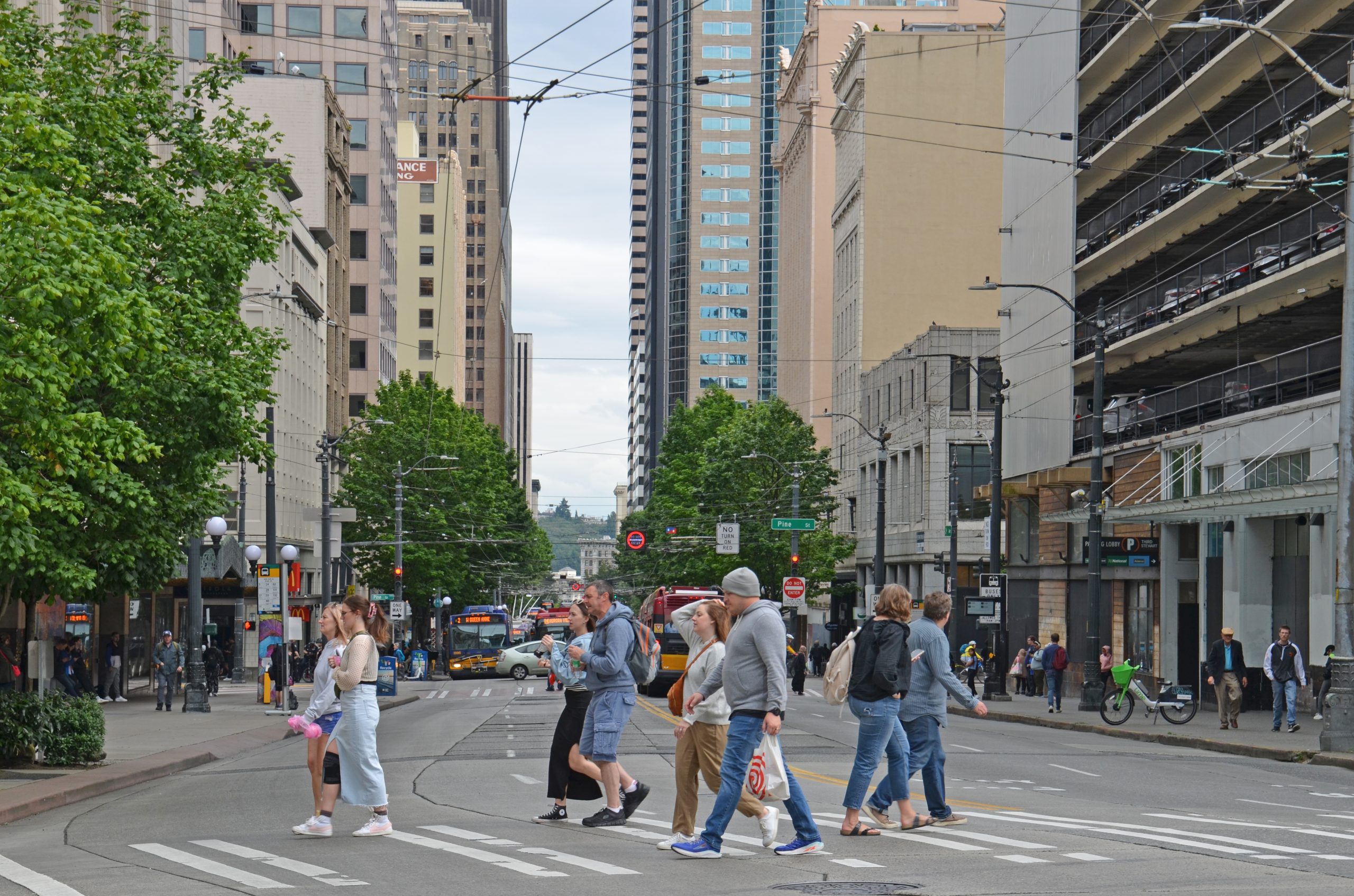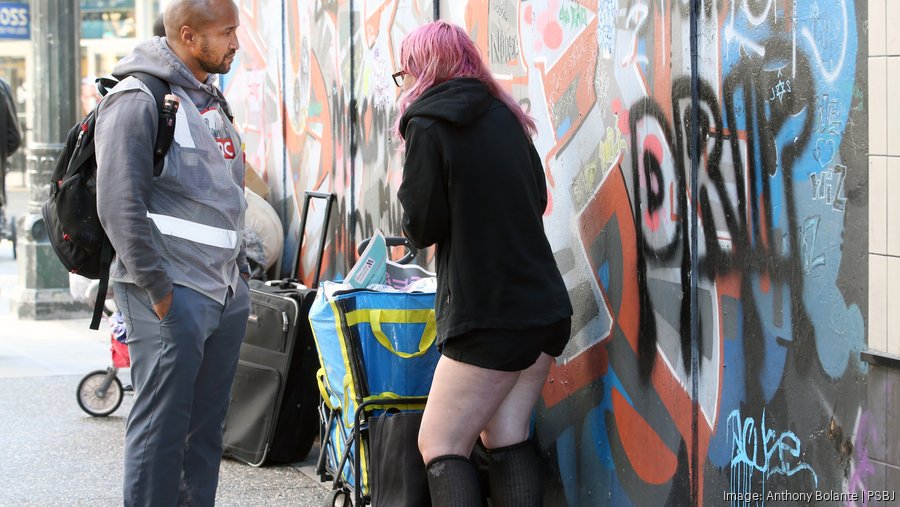News
PSBJ: As conditions around Third Avenue improve, Harrell prepares advance effort
Posted on

This story was originally published in the Puget Sound Business Journal on Oct. 24, 2024.
By Marc Stiles – Senior Reporter, Puget Sound Business Journal
The smell of cleaning supplies permeated the air outside of the McDonald’s on Pine Street on Oct. 18, when at the end of the morning commute, no one could be seen smoking fentanyl along an eight-block stretch of Third Avenue.
For those familiar with Third Avenue and its ails, the improvement is palpable.
In early September the city and various partners began a concerted effort built around a new Downtown Activation Team (DAT). Work includes what the city calls “scheduled restoration actions,” such as more frequent pressure washing of sidewalks and alleys, a larger police presence and more frequent welfare checks on people living on the streets.
The initial DAT focus has been centered on Third Avenue, from First to Fifth avenues and Pine to Pike streets. Mayor Bruce Harrell’s office said this week that since early September, the area has seen a 12% decrease in 911 calls for service, and a 25% decrease in violent crime, with additional reductions in crime throughout downtown.
“I was going down Fourth Avenue yesterday, and there was not a single public safety challenge that I saw the entire time,” Bob Kettle, the chair of the City Council’s Public Safety Committee, said in a Tuesday interview.
Harrell, who said visible and consistent actions are key to sustaining progress, may soon advance those efforts. Details will be unveiled in an executive order the mayor expects to issue in the coming weeks.
DAT brings together around 15 city departments, including police and transportation, and the Downtown Seattle Association, the Metropolitan Improvement District (MID), We Deliver Care and others.

“It is happening. There are less people there in the Third Avenue corridor,” says Dominique Davis, chief development officer at We Deliver Care. The public safety company employs two dozen gray-and-red-clad public safety ambassadors who walk the streets in small groups, 16 hours each day, deescalating situations and connecting people in need with service providers.
Harrell says the new approach allows the city to better coordinate place-based activations in downtown, the Chinatown International District, and Little Saigon, where on the afternoon of Oct. 18, police were on hand as city transportation workers scrubbed graffiti and did other cleaning.
People have migrated to other areas, like Little Saigon and Sodo, Davis said. Residents who live around Freeway Park also report seeing a higher-than-normal number of unhoused people. Davis said just because people living on the streets sometimes are less visible doesn’t mean they’re getting housed.
“We don’t have enough places to refer people to,” he said. “The need to be able to heal people and house people and the need for detox beds is huge. We need to start focusing on how do we get more detox beds, more long-term shelter with strong case management presence.”